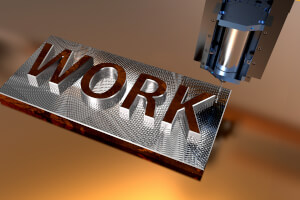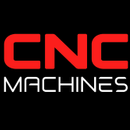CNC Laser Cutting vs. Laser Engraving: Understanding the Distinctions and Applications

CNC Laser Cutting vs. Laser Engraving: Understanding the Distinctions and Applications
Laser technology has revolutionized manufacturing, offering high precision and versatility in cutting and engraving materials. While CNC laser cutting and laser engraving are often mentioned in the same breath due to their use of lasers, their purposes, capabilities, and applications differ significantly. Understanding these differences is crucial for businesses and hobbyists alike to choose the right technology for their specific needs.
What is CNC Laser Cutting?
CNC laser cutting utilizes high-powered lasers to cut materials into custom shapes and sizes. Controlled by Computer Numerical Control (CNC), this process allows for precise cuts with clean edges and can handle complex patterns. The intensity of the laser beam is high enough to melt or vaporize material away, making it ideal for industrial manufacturing.
Industries and Applications:
- Aerospace: For cutting complex aircraft components.
- Automotive: Used in cutting car parts with high precision.
- Manufacturing: Produces parts and tools from metal sheets.
Materials:
- Metals: Including steel, aluminum, and copper.
- Plastics: Acrylic and other non-toxic plastics are commonly cut.
- Composites: Such as carbon fiber and fiberglass.
What is Laser Engraving?
Laser engraving involves using lasers to mark or engrave an object without cutting all the way through the material. It is less intense than laser cutting but precise enough to create detailed graphics, text, or other markings. Laser engravers can also achieve varying depths, providing a sense of texture and three-dimensionality to the finished product.
Industries and Applications:
- Giftware: Personalization of items like trophies, plaques, and jewelry.
- Signage: Creating signs and displays from various materials.
- Medical Devices: Engraving barcodes and identification on surgical tools.
Materials:
- Wood: Ideal for creating detailed art pieces or decorative items.
- Glass: Used for etching personalized messages or designs.
- Leather: Common for fashion and upholstery work.
History of Laser Technology in Manufacturing
The development of laser technology for industrial use began in the 1960s, following the invention of the first laser in 1960. Laser cutting technology was first used to cut diamond dies, and by the 1970s, it had expanded into cutting metals for aerospace and automotive industries. On the other hand, laser engraving developed as a fine, detailed approach to marking parts and products without the physical contact that traditional methods required, thereby reducing wear and tear on the materials being engraved.
Comparing CNC Laser Cutting and Laser Engraving
| Feature | CNC Laser Cutting | Laser Engraving |
|---|---|---|
| Primary Function | Cuts through materials | Marks or engraves surfaces |
| Material Thickness | Can handle thick materials | Best with thinner, more delicate materials |
| Speed | Generally faster for cutting through materials | Slower, as it requires detail and precision |
| Precision | High precision in cutting shapes | High precision in surface detail |
| Cost | Higher due to intense power usage | Lower cost due to less power consumption |
Choosing Between CNC Laser Cutting and Laser Engraving
When deciding between CNC laser cutting and laser engraving, consider the final product's requirements. If you need to cut through materials, especially metals, CNC laser cutting is the appropriate choice. However, if your project involves detailed designs on the surface of materials without cutting through, laser engraving is more suitable. Each method serves distinct purposes and choosing the right one can significantly impact the quality and efficiency of your projects.
Conclusion
Both CNC laser cutting and laser engraving offer unique benefits and cater to various industrial and creative applications. By understanding the specific capabilities and applications of each, businesses and manufacturers can better harness the potential of laser technology to meet their precise production needs, ensuring high-quality, efficient outputs tailored to their market demands.


